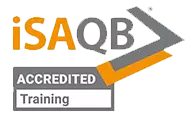04-06 Jun 2024
GMT +02:00
-
Tue - Thu
- 09:00 - 17:00
Seats
5+ left
-
15% Monthly Pick
-
![globe icon]() Online Training
Online Training
- Trainer
- Matthias Bohlen
- Sprache
- German
- Standort
- Online
- Plätze
- 5+ Frei
2253,00
1915,00
Guaranteed
iSAQB® Domain Driven Design (DDD) is an advanced iSAQB module where you can learn to develop a language and use DDD models to connect different applications. Using the sample apps, you can learn the individual steps in DDD training in tectrain. It is an application-oriented and high-quality software architecture. Design is not complicated if you are involved in the field of expertise and architectural guidelines of Domain-Driven Designs!

GMT +02:00
Seats
5+ left
2253,00
1915,00
Guaranteed
GMT +02:00
Seats
5+ left
2253,00
2028,00
GMT +02:00
Seats
5+ left
3150,00
2835,00
Guaranteed
GMT +02:00
Seats
5+ left
2253,00
2028,00
GMT +02:00
Seats
5+ left
3150,00
2835,00
The iSAQB® Domain Driven Design (DDD) is an iSAQB®-Advanced-Level-Module in which you can learn how to develop a language and use DDD patterns to connect to different applications. The DDD training at Tectrain uses sample applications to teach the individual steps. It is about the application-oriented, as well as high-quality software architecture. Designing is not difficult if you get involved in the domain and architectural guard rails of domain-driven design!
You will build a solid understanding of DDD concepts during the training, as well as the confidence to apply this newfound knowledge. Developers enjoy learning with us and are trained to become true experts in your application area.
Visit our iSAQB Certifications Overview page to gain a comprehensive understanding.
Matthias Bohlen
Agile software development provides an orientation for Domain Driven Design. From the Domain-drive Design the basic concepts, as well as elements of the application domain are modeled, so that the software fits the technicality of the application domain. The Domain-driven Design is independent to the programming language, frameworks, as well as tools, however, there are frameworks and tools that support the approach of DDD or offer an implementation of specific DDD patterns.
Domain Driven Design is characterized by a number of concepts that should be considered in the modeling process. The introduction of a ubiquitous (generally used) language is essential, which is used in all ranges of the software production. It is a language that describes the technicality of the elements of the domain model, classes, methods, and so on. It is described as "A language structured around the application domain, as well as used by all team members to link all team activities to the software."
- Eric Evans: presentation notes from his November 6, 2007 talk at JAOO.
The following parts of the domain model differentiate themselves in the Domain Driven Design:

The syllabus is based on iSAQB Module: DDD Version 1 . 1 (October 2017) and consists of six parts. A DDD training course should last at least 3 days.
In the DDD training the participants are taught how to design a domain-driven architecture in cooperation with developers and domain experts. This is answered together in the DDD training.
At the end of the model the participants know the important principles of Domain Driven Design. They will also be able to apply this to the design and implementation of software systems. They will also be able to establish a ubiquitous language between developers and domain experts. Through learned modeling techniques, as well as architecture tools, you can adopt the parts of the common domain language into your software systems.
Our seminar is licensed with the iSAQB® and contributes to the approval of the final Advanced Level Certification Exam (CPSA-A). You will achieve 30 credit points with your participation in the 3-day DDD course. Of these, 10 are in the communicative and 20 in the methodological area. You will also receive a qualified certificate of attendance.
For more information about the certification, visit the official iSAQB-DDD page.
Would you like to register for iSAQB® Advanced Level - Domain Driven Design Training Course?
AnmeldenTell us what we can do better next time.

